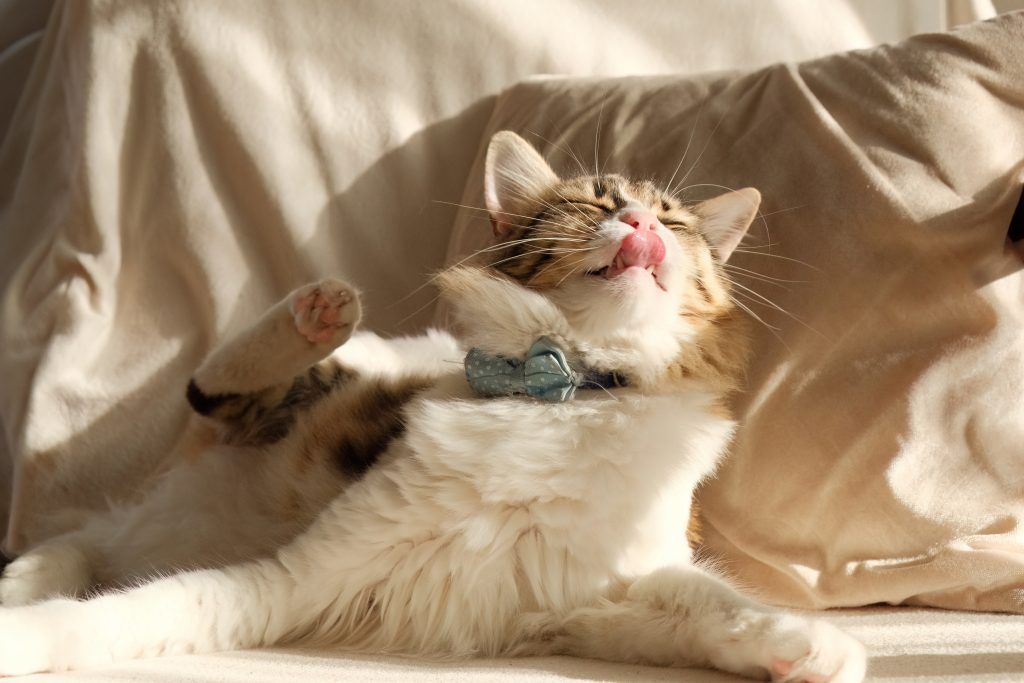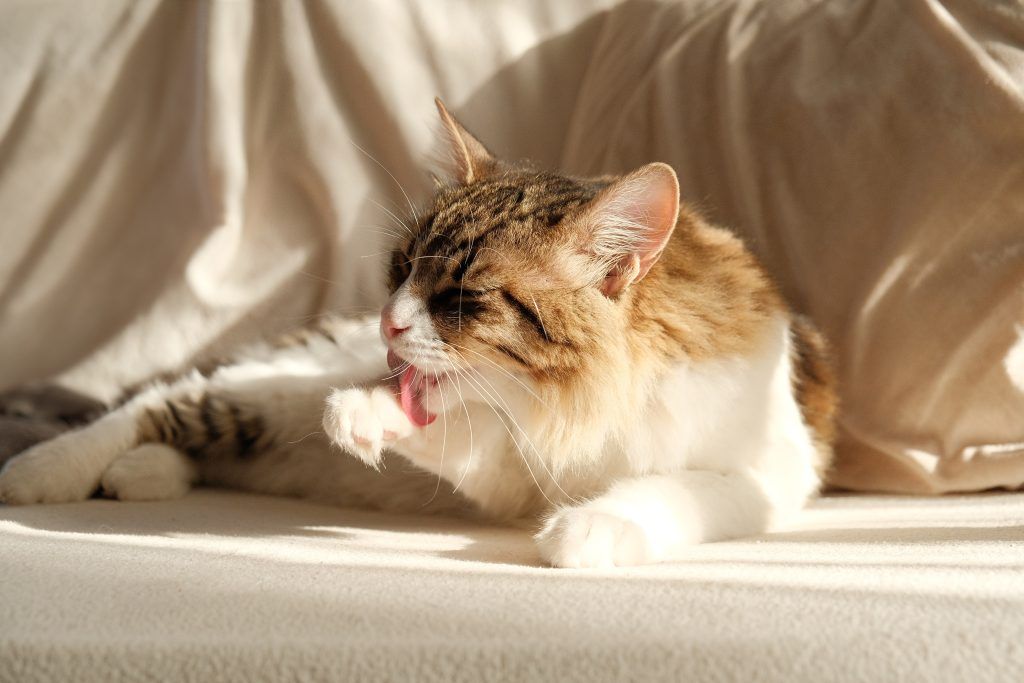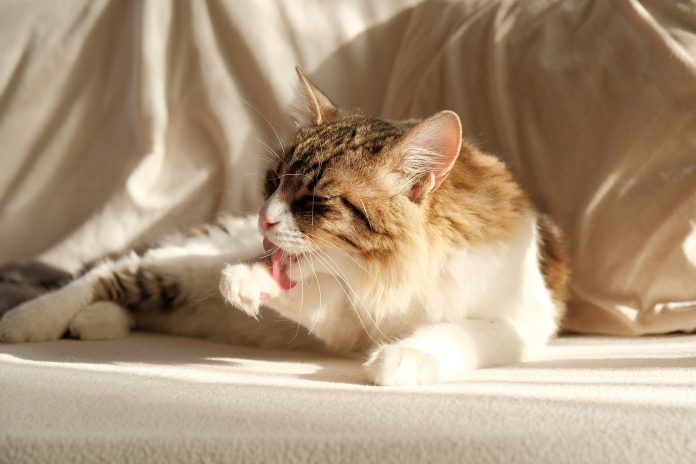Wanting to bring your beloved cats along on an airplane journey may seem daunting initially. However, adequate preparation and planning enables smooth, stress-free air travel with feline companions.
This guide extensively covers choosing a pet-friendly airline, pre-flight health and document protocols, anxiety reduction techniques, in-flight care and entertainment, dealing with potential mid-air emergencies, arrival and post-travel recuperation when navigating the skies with two cats.
First, let’s review key introductory considerations for air travel with cats.

Understanding the Importance of Traveling with Cats
Beyond just transportation, bringing animal companions on enriching trips allows pet owners to bond more closely with their cats and involve them in travel adventures. With proper preparation based on feline needs, cats can safely and comfortably travel on commercial flights across the country or world.
Overcoming Challenges for a Smooth Air Travel Experience
Air travel with cats admittedly involves more planning and work than solo travel. However, proactively anticipating cats’ needs every step of the journey, employing anxiety and stress-reducing strategies, packing adequate supplies, and diligently monitoring their comfort enables smooth, enjoyable air travel with minimal fuss and maximum fun.
II. Preparing Your Cats for the Journey
Thorough preparation is the key to keeping your cats healthy, secure, and as stress-free as possible throughout the travel experience.
Ensuring Cats’ Health: Veterinary Checkup and Documentation
Schedule a pre-travel veterinary visit for health examinations, administering any needed vaccines or boosters, obtaining prescription anti-anxiety or motion sickness medication for the flight, and acquiring an official health certificate signed by the vet stating your cats are fit for air travel without contagious disease.
Microchipping and Identification Tags
Double check that your cats are microchipped and wearing secure collar tags with your current contact information in case they accidentally escape or get lost during any point of transit. This provides an extra layer of security.
Familiarizing Cats with Carriers: Training and Acclimatization
Gradually introduce your cats to the carriers you plan to use for air travel by placing treats, catnip and favorite toys inside with the doors open, so they learn to associate carriers with positive experiences. Also take your cats on short test drives around town in the carriers prior to the flight so they become accustomed to motion sensations.
III. Choosing the Right Airline and Flight
Researching individual airline policies will help you select the best flight option tailored for your needs and cats’ comfort.
Researching Pet Policies of Airlines
Thoroughly compare different airlines’ pet fees, carry-on kennel size allowances, pet documentation rules, boarding logistics, airport amenities like pet relief areas, and any other cat-related policies. Identify an airline with the most cat-friendly policies that align with your situation.
Direct vs. Connecting Flights: Pros and Cons
Nonstop direct flights minimize disruptions and delays in reaching your final destination but may not be available based on route limitations. Connecting flights allow covering more route options but involve plane changes and layovers that increase transition stress for cats. Carefully assess your specific needs and priorities.

Selecting a Pet-Friendly Cabin: Cabin vs. Cargo Hold
Whenever possible, booking your cats to travel in the main aircraft cabin with you ensures constant supervision, environmental control, and handling with care. The temperature controlled cargo hold poses more risks and stress – only use this option as an absolute last resort.
IV. Necessary Travel Documents and Supplies
Compile all mandatory paperwork and essential feline care supplies well in advance of your departure date to stay organized.
Documentation Checklist: Health Certificates, Vaccination Records, and More
Consult your chosen airline’s specific pet policy to determine which forms and documentation are required, such as current veterinary health certificates, proof of rabies vaccination, international health and immunization forms, entry requirements for your destination, and any mandatory kennel boarding letters.
Packing Essential Cat Supplies: Food, Water, Litter, and Medications
Pack at least 2-3 days’ worth of your cats’ regular food, collapsible food bowls, bottled water, favorite toys and blankets, cat litter and litter box or puppy pads, a litter scoop, plastic baggies for waste disposal, and any medications including anti-anxiety meds or supplements. Packing intelligently ensures you have all essentials.
Cat-Friendly Travel Gear: Comfortable Carriers and Leashes
Invest in well-ventilated, sturdy cat carriers and body harnesses with leashes for maintaining security throughout the airport navigation and in-flight. Affix a ‘Live Animal’ sticker to carriers for clear visibility.
V. Pre-Flight Preparations
Meticulous planning on the day of departure helps ensure everything goes smoothly before boarding your flight.
Adjusting Feeding and Water Schedule
Avoid free feeding cats within 4-6 hours of your flight departure time to prevent in-flight nausea, vomiting or bathroom accidents. Continue providing water up until check-in.
Preparing Cats for Security Screening: Removing Collars, Leashes, etc.
For TSA security screening, place cats into their carriers and remove any collars, leashes or harnesses – these items can stay with you as the passenger. Remove food, water bowls and toys but keep absorbent kitty litter inside carriers. Know screening protocol.
Managing Pre-Flight Anxiety: Calming Techniques and Pheromone Products
Use synthetic pheromone sprays liberally inside cat carriers to encourage relaxation. Provide favorite toys or blankets from home for comfort. Gently soothe anxious cats verbally and physically to ease nerves before boarding.
VI. Airport Arrival and Check-In
Navigating the airport with cats in tow requires allowing ample time and preparation.
Arriving Early: Settling Cats and Minimizing Stress
Arrive at the airport at least 2+ hours prior to your scheduled flight departure time in order to get through security screening, find an area away from loud crowds to settle in with cats, allow cats a bathroom break outside carriers, and slowly acclimate them to the busy, stimulating airport environment.
Checking In: Notifying Airline Staff About Cat Travel
When checking in at the airline counter, proactively alert staff that you have cat carry-ons to be stowed with you in the main cabin so appropriate notes are made. Verify any carrier size, number of pets, and documentation rules are followed.
Final Checklist: Documents, Supplies, and Cat Carrier
Right before boarding, re-inventory documents, refresh food/water/litter supplies, and place cats securely into carriers. Don’t forget to affix live animal stickers.
VII. In-Flight Care and Comfort
Once seated aboard the aircraft, diligently monitoring cats and attending to needs maximizes in-flight comfort.
Boarding with Cats: Ensuring Safety and Comfort
Carefully stow cat carriers underneath the seat directly in front of you, taking care not to bump or jostle them. Belt the carrier in or place inside an enclosed under-seat kennel purchased in advance for added safety. Never store cats in overhead compartments.
Storing Cat Carrier: Under the Seat or in Overhead Bin?
For safety reasons, regulations mandate cat carriers can only be stowed underneath the passenger’s seat or in an approved under-seat kennel specially designed for air travel. Overhead compartments are not permitted by airlines for cat carriage.
Minimizing Stress During Takeoff, Turbulence, and Landing
Keep carriers partially covered with blankets to maintain a secure den-like environment for cats. Talk soothingly to reassure them, and consider having a harness/leash available to gently restrain or stroke cats as needed. Avoid removing cats from carriers during stressful phases of flight.
VIII. Interacting with Cabin Crew and Passengers
Thoughtful communication ensures peaceful coexistence in tight airplane quarters.
Communicating with Flight Attendants: Cat Presence and Needs
Discreetly inform nearby flight attendants that you have live cat pets in the cabin carry-on area and may need to occasionally provide them care during the flight. Be prepared to politely answer any questions from crew.
Being Courteous to Fellow Passengers: Managing Allergies and Concerns
If anyone nearby has allergies, proactively notify crew to re-accommodate seating as needed. Otherwise keep cats securely contained and be mindful of neighbors’ personal space and comfort.
Educating Others About Traveling with Cats: Promoting Understanding
Politely explain proper airline procedures, precautions taken, and specialized gear if nearby passengers seem curious or concerned about cats’ presence. Be an advocate for responsible cat air travel.
IX. Mid-Flight Care and Entertainment
Vigilance and proactive care while airborne helps cats remain relaxed.
Offering Food and Water During the Flight
Discreetly open carriers to offer small amounts of food or treats and replenish water. Use absorbent puppy pads inside to catch any accidents. Immediately re-secure cats in carriers afterward.
Providing Opportunities for Stretching and Bathroom Breaks
If permitted based on airline policies, occasionally allow cats brief, closely supervised time to stand, stretch, and move around in an approved pet relief area mid-flight once confirming no escape risk. Never let cats freely roam unsupervised in cabin.
Engaging Cats: Toys, Comfort Items, and Gentle Affection
Offer favorite toys from home and gently pet or soothe cats inside carriers to provide mental stimulation, reassurance and comfort. Use synthetic pheromone spray inside carriers if cats seem anxious.
X. Dealing with In-Flight Emergencies
While rare, properly handling any emergencies mid-flight is crucial for cat health.
Recognizing Signs of Distress: Anxiety, Illness, or Discomfort
Closely monitor cats and watch for intense vocalizing, agitated pacing, drooling, vomiting, labored breathing or other signs of distress needing urgent attention. Never hesitate to act.
Seeking Assistance: Alerting Flight Crew to Cat-Related Issues
Immediately yet discreetly notify cabin crew of any concerns with your cats so they can relay to the pilot and coordinate connecting with a veterinarian on the ground for care upon landing if needed.
First Aid Basics: Handling Minor In-Flight Health Concerns
Carry motion sickness medication to administer if cats vomit. Provide water using an oral syringe and nutrition gel for dehydration symptoms. Monitor very closely until landing.
XI. Landing and Arrival
Safely navigating the last leg of the journey requires diligent cat care.
Preparing Cats for Descent: Ensuring Comfort
Anticipate cats may become restless or anxious during flight descent. Talk reassuringly, provide favorite toys, and avoid opening carriers until safely inside the arrival terminal to prevent escape.
Post-Flight Relief: Offering Water and Bathroom Breaks
Once securely inside the terminal after deplaning, offer water and let cats have a chance to properly relieve themselves in designated airport pet areas before the trek to baggage claim and ground transportation pickup.
Exiting the Plane: Cat Priority and Safety
When deplaning, discretely notify airline crew you are traveling with cats and request to carefully exit last after all other passengers to minimize chaos and risk of escape.
XII. Post-Flight Care
Helping cats recuperate upon returning home prevents behavioral issues.
Reuniting with Cats: Easing Transition After the Journey
Gently retrieve cats in carriers and keep initial interactions low-key. Maintain a calm, quiet setting during car rides home with relaxing music and minimal disruptions.
Monitoring Cats’ Well-Being: Watchful Observation
Closely monitor for signs of soreness, fatigue, loss of appetite, anxiety or other unusual behavior indicating sickness or distress from travel. Promptly call your veterinarian with any substantial concerns.
Resuming Normal Routine: Gradual Reintroduction to Home Environment
Gradually transition cats back into their normal home environment and schedule over 2-3 days. Provide extra love, affection and comfort during this readjustment period.
XIII. Summary and Recap
In summary, smooth air travel with two cat companions involves:
Reflecting on a Successful Feline Air Travel Experience
The key takeaway is that with proper carrier acclimatization, anxiety prevention, attentive in-flight care and caution, cats can travel in airplane cabins safely, comfortably and relatively stress-free.
Key Takeaways: Tips for Taking Two Cats on a Plane
Research airline policies thoroughly, use calming pheromones and aids, never sedate cats without veterinary approval, carefully stow carriers in-cabin only, provide ample supervised relief opportunities, and vigilantly monitor cats throughout the entire travel journey.
XIV. Frequently Asked Questions (FAQs)
Are all airlines pet-friendly?
Most major airlines do allow small cats and dogs in the main cabin with the passenger, but compare individual airline pet fees, carrier size allowances, pet documentation rules and overall policies carefully to identify the best fit.
How can I prevent my cats from getting anxious during the flight?
Bring along synthetic pheromone sprays, provide familiar items from home, play soothing music during loading/takeoff, refrain from sedating cats without veterinary guidance, allow occasional closely supervised stretching breaks, and talk, pet and reassure cats throughout the journey.
Can I sedate my cats for air travel?
Sedating cats with over-the-counter medication is highly inadvisable and risky. Consult your veterinarian beforehand if you feel medication is absolutely necessary for extremely anxious cats.
What should I do if my cats refuse to eat or drink during the journey?
Frequently offer small amounts of cats’ favorite foods and water. If cats still won’t eat, watch closely for dehydration signs. Supply supplemental hydrating gels or ask the airline if a vet can administer injectable fluids.
Is it safe to let my cats out of the carrier during the flight?
Airlines only permit cats to exit carriers when supervised in an approved pet relief area mid-flight to briefly use the bathroom, stretch and move around. Unsupervised free-roaming cats are prohibited in aircraft cabins for safety reasons.
XV. Conclusion
We hope this guide empowers cat owners to confidently embrace air travel adventures with their furry feline companions.
Empowering Cat Owners to Embrace Air Travel with Confidence
With diligent preparation, proactive in-transit care, and open communication, cat parents can navigate commercial flights with minimal fuss and maximum memorable fun together.
Creating Lasting Memories with Feline Companions in the Skies
Look forward to strengthening your treasured human-cat bond while making lasting memories during your mutual air travel explorations!

